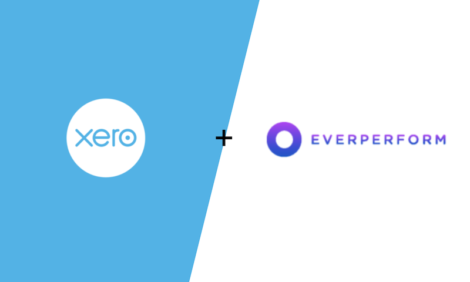
Benchmarking employee wellbeing in the advisor community

Since the pandemic’s arrival, bookkeepers and accountants have faced unprecedented pressures that have taken a toll on their mental wellbeing. From shifting lockdowns, to navigating new government grants and the relentless pressures that come with supporting small business clients, the advisor community has had it tough. As a result, the conversation around wellbeing for partners and small businesses is changing – and it’s all for the better.
Daniel Spitty and Tom Boyd are part of the team behind Everperform, an app that helps advisors improve employee productivity, relationships and wellbeing using real-world data and insights. Recently, we invited the duo to join Xero in a virtual webinar where we discussed some of the best-practice wellbeing tips for advisors and their employees.
Alongside Daniel and Tom, we also invited Amanda Kenafake of Power Tynan to the panel. As the CEO of a wellbeing-focused accounting firm, Amanda shared her learnings and advice from years spent creating an environment where people want to work and perform at their best. So to help you do the same, read on to learn more about the key takeaways, tips and insights from our conversation.
Remember, wellbeing and performance are interdependent
Everperform recently created the Performance Index for Accounting and Professional Services, comprising more than 350,000 data points from over 50 firms and 2,500 industry professionals to provide real time measurements on the multiple dimensions of performance. These include energy, recovery, balance, self care, growth and impact. Using low touch, high frequency methods to capture the sentiment of leaders and employees, the index can determine the impact of one metric on another, creating a holistic view of wellbeing in the advisor community.
Daniel, Everperform’s CEO, explains, “The measure of a good advisor is no longer just about productivity, write-offs and billable hours.” Instead, the link between performance and wellbeing is becoming more tangible. He notes that the index data validates industry-specific trends, meaning we now have a tool to track and proactively address emerging issues.
“For example, we know that the seasonal impacts on wellbeing are real (particularly in the lead up to end of the financial year). However, with enough foresight and awareness, there is potential to prevent these trends from occurring cyclically. We hope to see the results of this in FY22,” says Daniel.
Don’t be afraid to use data to support your wellbeing strategy
It’s said that you can’t improve what you can’t measure. And that’s exactly why Tom Boyd, Everperform’s Wellbeing Growth Leader, was clear about the value of capturing data regularly – particularly in regards to employee sentiment. He explains that most business leaders are trying to make a positive impact in their firms, but frankly, they don’t know where to start or how to measure success.
“The way our index leverages data is with the ability to reflect on real-time weekly insights from Everperform’s clients. What’s more, we can use this data to respond to what we’re seeing more broadly across the industry,” says Tom. This knowledge makes it possible to identify areas where the advisor community is seeing success across its six wellbeing metrics; and where it can improve. What’s equally crucial is that on an individual client level, they can review the changes made by different organisations and what impact they have on their employees, creating even more evidence to support the value of wellbeing practices.

Power Tynan’s results compared to the Everperform Performance Index.
Wellbeing is a marathon, not a sprint
Amanda of Power Tynan has been an industry leader – “Walking the talk,” as she describes it – by creating an environment that puts employee wellbeing first. When asked what’s been successful for her firm, Amanda explains, “There’s no silver bullet. Instead, there’s a whole heap of things that we do to make sure every individual feels that they can give their best on a daily basis.” And these efforts are being recognised. This year, Amanda was a finalist in the prestigious Women in Finance awards, while Power Tynan was recognised as a 2020 Toowoomba Chamber of Commerce Employer of Choice.
In terms of employee wellbeing strategies that have had the most impact, Amanda lists a few: “We utilise ‘flex time’ to help employees deal with other commitments if they need to. They can also set their own hours, so long as the work is being done and the clients aren’t being let down. We’ve also implemented ‘recharge days’ to allow employees downtime to rest and recover,” she says. Most importantly, Amanda adds, “You need to ensure that leaders of the business are living and breathing by example. They must be doing the work, not just talking about it.”
These examples and insights prove that a wellbeing strategy doesn’t have to be complicated. Instead, it starts with incremental changes that are led from the top to make a meaningful difference throughout an organisation. Pair that with actionable insights, like the one’s Daniel and Tom shared, and you’re on the path to success. Because after all, “If we look after our people, then they look after the clients who, in turn, look after the business,” says Amanda.
To learn more about Everperform and their wellbeing-led performance framework, visit their website. If you’re an advisor wanting to help your clients and yourself with mental wellbeing, check out this Xero and Beyond Blue course.
The post Benchmarking employee wellbeing in the advisor community appeared first on Xero Blog.
Source: Xero Blog






